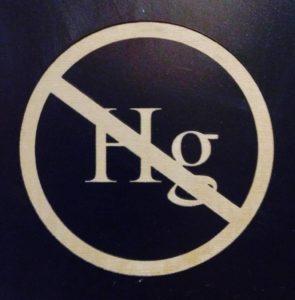 Here’s more evidence that mercury-free dentistry is winning: Just last week, the European Parliament’s Environment Committee voted overwhelmingly to completely phase out amalgam by the end of 2022!
Here’s more evidence that mercury-free dentistry is winning: Just last week, the European Parliament’s Environment Committee voted overwhelmingly to completely phase out amalgam by the end of 2022!
While this isn’t yet a totally done deal – according to Charlie Brown of Consumers for Dental Choice, there are still “at least two more stages to go in the EU’s multi-layered regulatory process” – it’s a giant step forward. It’s also a long-overdue step we need to take here in the US.
But of course there are those who continue to insist that amalgam isn’t a problem, despite the fact that it’s 50% mercury and that there is no safe level of exposure to this potent neurotoxin. You’ve heard all the usual claims – that mercury is locked into amalgam; that mercury becomes inert when mixed with other metals; that any mercury that does get released from fillings isn’t harmful…ad nauseam.
Science has shown these claims to be false. And two recent studies just add more weight to the evidence against dental amalgam.
The first, published last month in Environmental Science & Technology, involves a new testing method to identify the source of mercury contamination. This would certainly help lay to rest the possibility of ascribing mercury body burden to any source other than dental amalgams.
Until now, we’ve been able to measure the amount of mercury exposure – through urine, hair, and blood samples – but we’ve not had a way of pinpointing the source. (There are also limitations to such testing in that they mainly measure mercury as it’s being excreted and can’t account for metals stored in organs such as the liver, kidneys, and brain.) But as noted in the press release about the research,
“Although urinary mercury concentration is considered to be the most accurate and widely used biomarker for assessing chronic exposure to mercury vapour and divalent mercury, we showed that inorganic mercury from dental amalgams can be detected in hair with distinct intermolecular structure from that of methylmercury from fish consumption” says Jean-Paul Bourdineaud, Professor of environmental toxicology at the University of Bordeaux, France.
“Epidemiological studies on mercury intake through fish consumption assume that hair concentration is an indicator of only this source. Our results show that this assumption may not always be true” says Kathryn Nagy, Professor of Earth and Environmental Sciences at the University of Illinois at Chicago.
Then there was the research out of the University of Georgia, where scientists showed that – to quote the headline of their press release – “dental fillings raise levels of mercury in the body.”
You don’t say!
Mercury exposure from dental fillings is not a new concern, but previous studies were inconsistent and limited, according to Xiaozhong “John” Yu, assistant professor of environmental health science and co-author of the study.
“This study is trying to provide the most accurate levels of exposure, which will form the scientific basis to make future risk assessment,” Yu said, adding that the study was the first to also control for age, education, ethnicity, race, gender, smoking and seafood consumption, which is a known contributor to mercury levels in the body.
The researchers further analyzed exposure by specific types of mercury and found a significant increase in methyl mercury, the most toxic form of mercury, related to dental fillings. Yu said this result suggests the human gut microbiota, a collection of microorganisms living in the intestines, may transform different types of mercury.
Unfortunately, the writer of this press release made a significant error – one that, regrettably, made it into other headlines. According to the release,
The results show that individuals with more than eight fillings had about 150 percent more mercury in their blood than those with none. The average American has three dental fillings, while 25 percent of the population has 11 or more fillings.
However, what the team actually found was that the 150% increase was found among those with more than eight amalgam surfaces – not total fillings. Any filling can involve up to five surfaces: the distal (toward the back), mesial (toward the front), occlusal (the chewing surface), buccal (cheek-side), and lingual (tongue-side). It’s certainly possible to have more than eight amalgam surfaces on just three amalgam-filled teeth.
And truth be told, does such quantification really matter? We know mercury is toxic. We know it bioaccumulates. We know that dental amalgam is one source of exposure among many.
Why add to anyone’s body burden at all? Why use a known poison when there are perfectly safe – and strong and durable and certainly more aesthetic – options available?